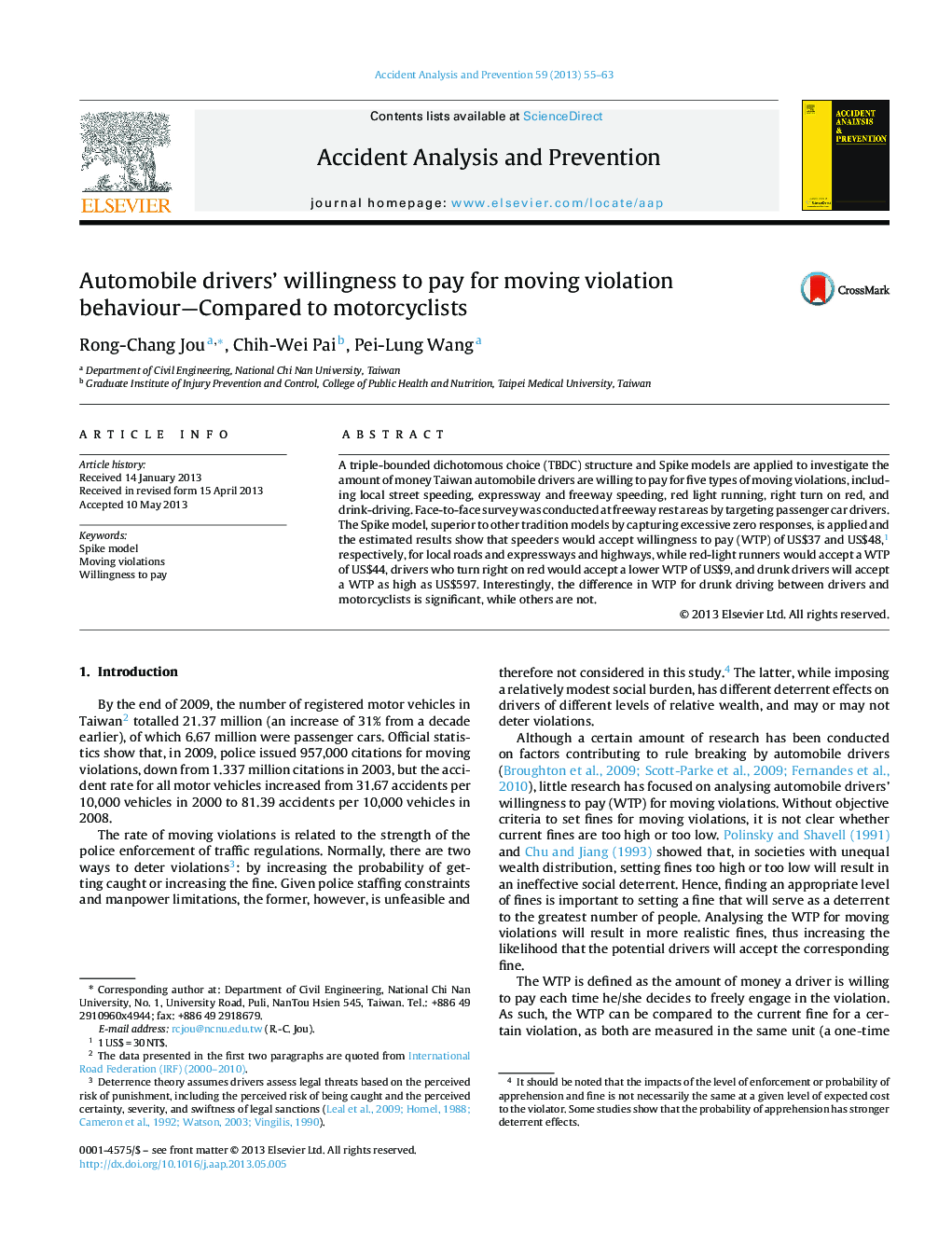| Article ID | Journal | Published Year | Pages | File Type |
|---|---|---|---|---|
| 6966094 | Accident Analysis & Prevention | 2013 | 9 Pages |
Abstract
A triple-bounded dichotomous choice (TBDC) structure and Spike models are applied to investigate the amount of money Taiwan automobile drivers are willing to pay for five types of moving violations, including local street speeding, expressway and freeway speeding, red light running, right turn on red, and drink-driving. Face-to-face survey was conducted at freeway rest areas by targeting passenger car drivers. The Spike model, superior to other tradition models by capturing excessive zero responses, is applied and the estimated results show that speeders would accept willingness to pay (WTP) of US$37 and US$48,1 respectively, for local roads and expressways and highways, while red-light runners would accept a WTP of US$44, drivers who turn right on red would accept a lower WTP of US$9, and drunk drivers will accept a WTP as high as US$597. Interestingly, the difference in WTP for drunk driving between drivers and motorcyclists is significant, while others are not.
Keywords
Related Topics
Physical Sciences and Engineering
Chemical Engineering
Chemical Health and Safety
Authors
Rong-Chang Jou, Chih-Wei Pai, Pei-Lung Wang,
